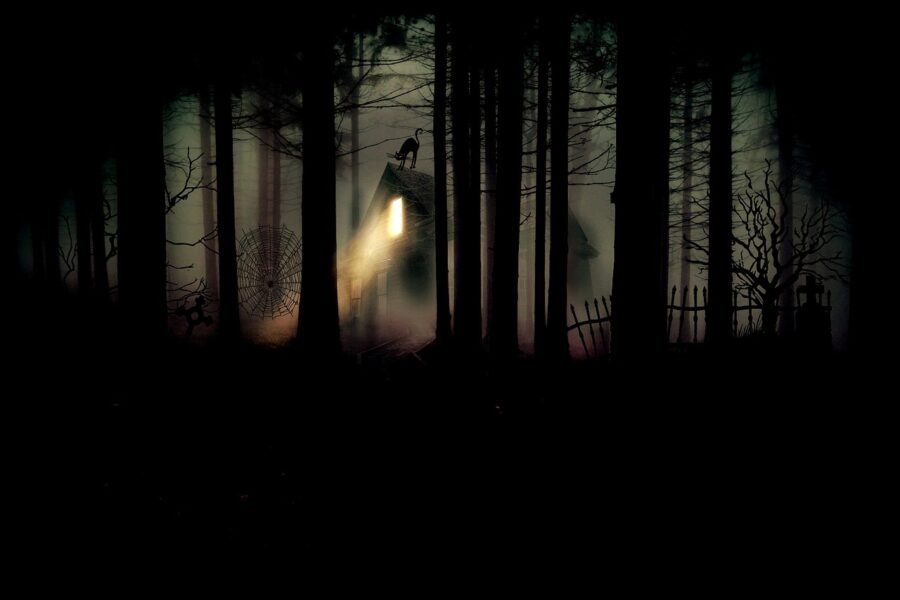
Blood, slashers and people falling over at ridiculous moments – no that is not the tagline to a potential new Quentin Tarantino adaptation of ‘You’ve Been Framed’ (though can you imagine?!) but instead a list of some classic features of the horror movie genre. Scary flicks are rooted in and defined by these certain tropes, and although different films have chosen to ignore or adapt such different features accordingly, there is one particular trope that remains present throughout most of horror – the ‘isolated place’.
The most important use of the ‘isolated place’ is its depiction of a character’s vulnerability.
The most important use of the ‘isolated place’ is its depiction of a character’s vulnerability. Nothing is more frightening than the unknown – put someone in a place they do not know, with very few or no people to depend on and up against something they cannot define, and you have the peak of terror. Often what you imagine might happen is far scarier than what actually will, and so by placing a character in such an uncomfortable and unfamiliar setting, the threat becomes not only physical but psychological as well.
The first location that comes to mind when thinking about the ‘isolated place’ is a convention that embodies the horror genre – the haunted house. Whether that be Eel Marsh House in The Woman in Black or the mysterious farmhouse of The Conjuring, the haunted house has become a staple of frightening films and one that many have attempted to adapt and evolve. Often the house seems to embody the lurking evil entity, as seen in The Little Stranger, and is often the first visual sign of decay and destruction within the film.
As previously mentioned, many movies have taken the image of a spooky house and tweaked it to fit their narrative. One example of this is in The Shining, where we do not have a house but instead a hotel, or in Psycho where it is the notorious Bates Motel that takes centre stage, although even that has a large, creepy house where Norman’s mother supposedly resides.
Another classic example of the ‘isolated place’ is the use of the woods. Perhaps best used in The Blair Witch Project, the characters become lost in the vast expansion of nature, with no recognisable landmarks or signs to aid them. This then becomes an important feature of the ‘isolated place’ – the lack of civilisation and the dominance of the natural world over humanity. Suddenly, when there is no sign of human existence, we start to feel on edge. This is certainly prevalent in The Witch when the family are outcasts to live in their own hut on the edge of the woods, away from the civilisation of the local village. When horrifying things start happening to the family, the sheer lack of human presence turns them against one another, and they start to blame witchcraft and turn mad. It is almost a symbol of nature toppling humanity’s control, all stemming from the theme of isolation.
There are so many other horrors that lean on this idea of being stuck in nature – the forest cabin in The Evil Dead, the family holiday farmhouse in The Texas Chainsaw Massacre and even the Antarctic research facility in The Thing. Although not obvious at first, the scientists who are abandoned in the snow in The Thing are still essentially victims of isolation in nature. Add in an unstoppable alien life force, and *boom* game over.
Although not obvious at first, the scientists who are abandoned in the snow in The Thing are still essentially victims of isolation in nature.
And whilst on the subject of alien life forces, let’s look at perhaps the best ever use of the ‘isolated place’ with Ridley Scott’s classic film, Alien. I mean where else do humans feel so small and insignificant but space? Far away from any home comforts, the brilliance of Alien relies on its use of one setting for the majority of the film – the Nostromo spaceship. All alone, and with no contact to humanity, the crew are set up to be picked off one by one when they bring the alien lifeform onboard – it is the classic “unknown place” with “unknown enemy” combination that is so “killer” once again (pun fully intended).
So then what has the trope of the ‘isolated place’ taught us? Stay clear of any abandoned houses, never go into the woods alone, and of course, in space no one can hear you scream…


